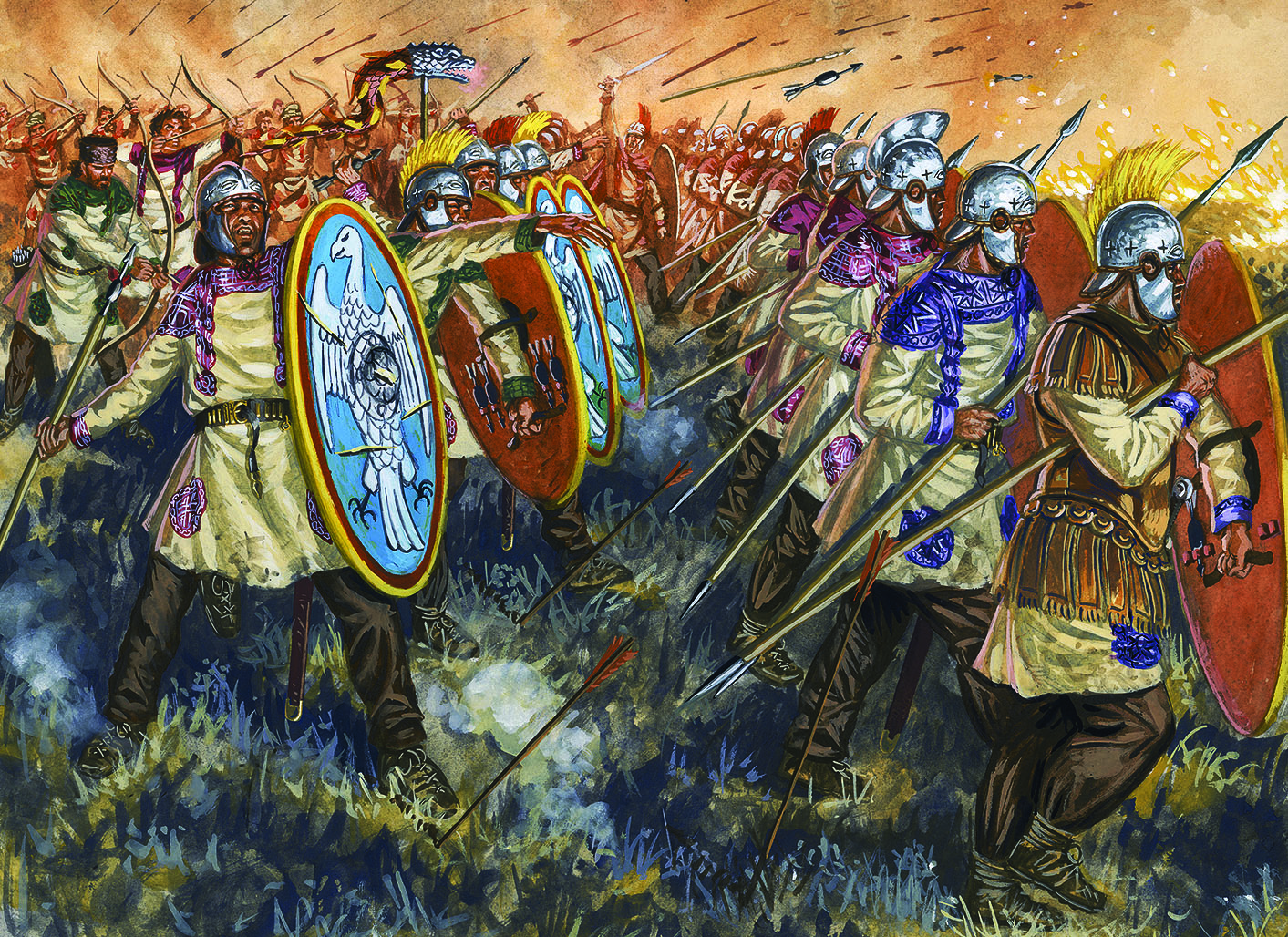In 378 Goth cavalry stormed a Roman force at Adrianople (present-day Edirne, Turkey). According to 4th century Roman historian Ammianus Marcellinus, the Goths inflicted “enormous losses” on the legionaries, moving St. Ambrose, archbishop of Milan, to bemoan “the end of all humanity.”
Two years earlier the Goths—loosely allied Germanic tribes facing pressure from the Huns—had received permission from the Eastern Roman empire to cross the Danube and settle in Thrace, on the European side of the Bosporus. But relations between the Goths and their Roman hosts deteriorated, and the newcomers were soon in open rebellion. In summer 378 Eastern Roman Emperor Flavius Valens called on the Western Roman empire for more troops. Meanwhile, he gathered an army at Adrianople and prepared for action.
Valens was still waiting for reinforcements when the Goths went on the offensive. On August 6 scouts reported the approach of some 10,000 Goths seemingly intent on encircling the Roman army and cutting its supply line. Two days later Valens, confident of numerical and military superiority, led 15,000 men on an 8-mile march north over exposed, difficult terrain to intercept the Goths.
Arriving outside the enemy camp that afternoon, the legionaries were dehydrated and tired from their long march. The nomadic Goths had literally circled their wagons, massing their main body of warriors, mostly infantry, out in front.
In a bid for time, the Goths sent envoys. Meanwhile, they lit grass fires upwind of the Romans, creating smoke to further torment the legionaries. What Valens didn’t know was that thousands of Goth horsemen were riding down on the field.
Without orders Romans rushed to the attack, gaining little ground before being repulsed. The fighting spread, prompting the cavalry on Valens’ left to charge the Goth wagons. At that moment disaster enveloped the Romans, for the Goth cavalry appeared on the field just as their foot soldiers were beating back the undisciplined attack. The riders fell on Valens’ left wing and shattered it, while Goth infantry swarmed the enemy center. Pressed on all sides, the legionaries recoiled into such a tight formation they lost their ability to swing a sword.
“Every attempt to stand firm failed,” British historian Charles Oman wrote, “and in a few minutes left, center and reserve were one indistinguishable mass. Imperial guards, light troops, lancers, auxiliaries and infantry of the line were wedged together in a press that grew closer every moment.”
Goth horsemen poured arrows into the mass and then charged, wielding swords and spears, as their infantry broke the Roman line. Two-thirds of the Roman army—including Valens and 35 tribunes—were slaughtered.
“The Goth,” noted Oman, “had become the arbiter of war, the linear ancestor of all the knights of the Middle Ages, the inaugurator of that ascendancy of the horseman which was to endure for a thousand years.” MH
Lessons:
Morale matters. The Romans were discouraged, dehydrated and tired when they arrived on the field, sapping their ability to fight.
Recon is essential. Roman scouts failed to pick up the huge enemy cavalry detachment. Had he known of its approach, Valens may have ridden straight into battle, likely changing its outcome in his favor.
Patience is a virtue. Valens’ failure to wait for reinforcements and his own “rash ardor,” in Ammianus’ words, precipitated the headlong rush to Roman defeat.
Overconfidence kills. Valens’ belief in Roman superiority lulled him into accepting envoys when he should have attacked, giving the Goth cavalry time to arrive. Likewise, his legionaries’ contempt for “barbarian” forces spurred men in the ranks to impulsively charge.
This article appeared in the September 2020 issue of Military History magazine. For more stories, subscribe here and visit us on Facebook:






